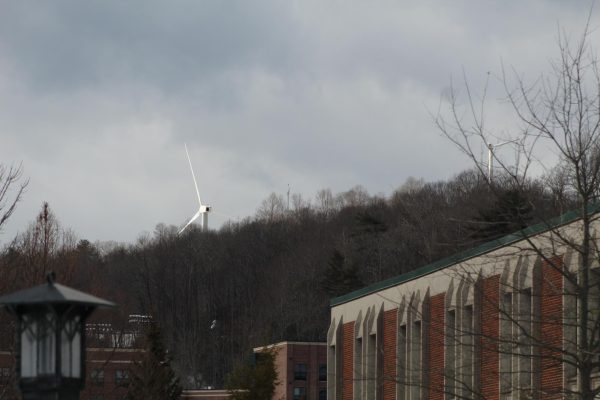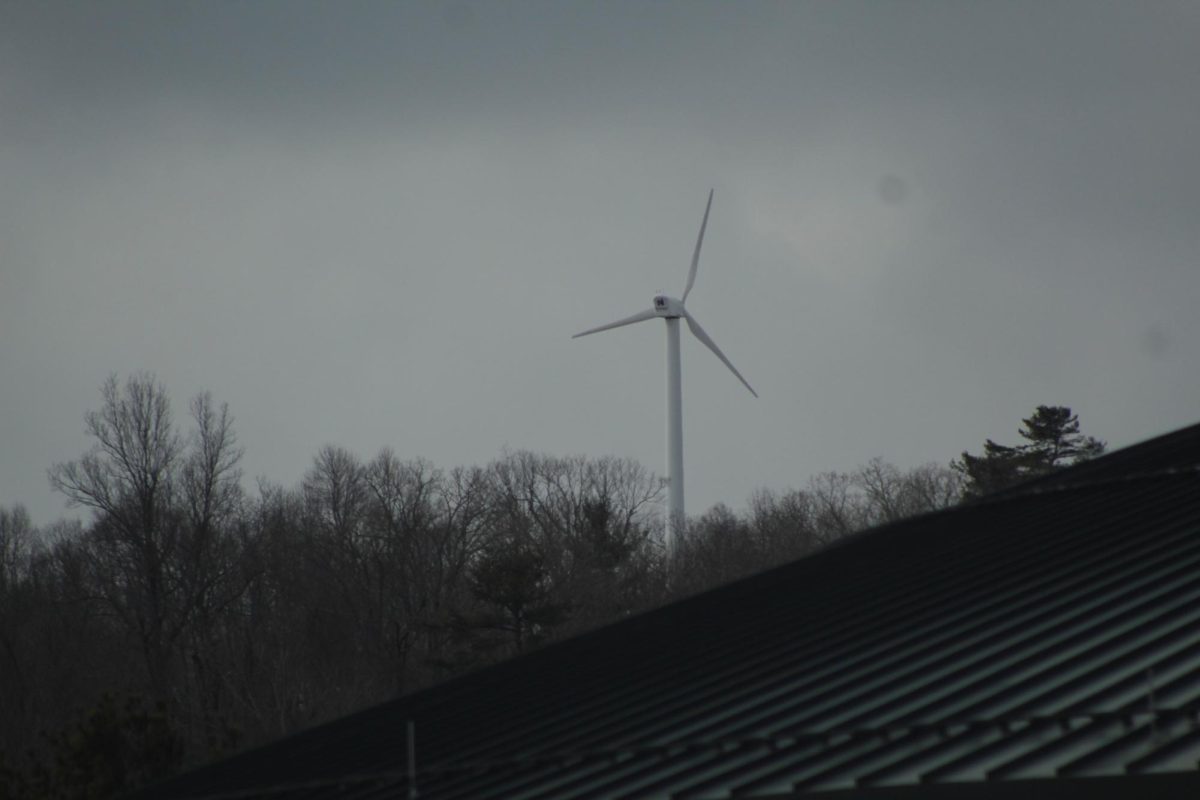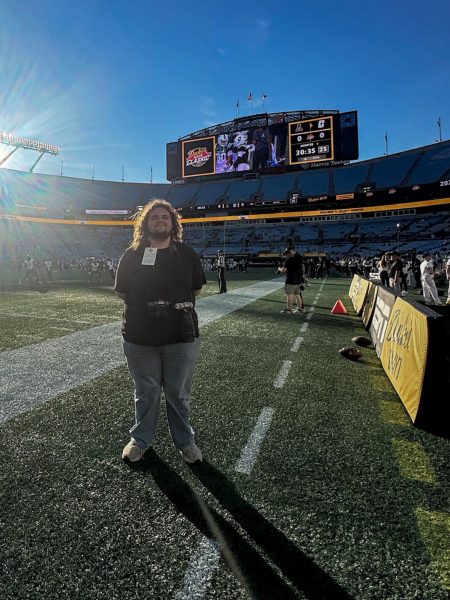Two wind turbines were installed within a few hundred yards of the existing Broyhill Wind Turbine during the third week of November. The two turbines are a part of App State’s Innovation District, serving the Zero-Carbon Energy System project.
The new turbines have been installed, but are not yet operational. One turbine resides northeast of the baseball stadium and the other is southeast of the Broyhill Center.
Neal Winebarger, project manager for the Innovation Campus, said the target date for operation of the new turbines is around April. Winebarger said the turbines will power the Innovation Campus and App State’s main campus.
He said the turbines can over-produce energy or under-produce energy depending on weather conditions in Boone. Overcast weather and “calm” wind conditions limit energy production, but he said sometimes the turbines will produce more power than the Innovation Campus can use. Because of this, some excess energy will be sent to App State’s main campus.
“These turbines will never produce more energy at any given time than App State as a whole can consume,” Winebarger said. “The idea is that it will never actually leave the main campus. All of the energy will be consumed by App State in some fashion.”
Winebarger said the wind turbines are connected to New River Light and Power’s energy grid, which is a subsidiary of App State and has been serving App State for over 100 years, according to their website.

Director of the Planning, Design and Construction Office Jeff Pierce said another key benefit of our wind turbines is that over time, “they will pay for themselves. App State will recoup savings to pay for the wind turbines via “cost avoidance” by not having to purchase fossil fuels generated from electrical energy for the new innovation district.
In an email, Pierce said, “our wind turbines generate their own energy, thus eliminating the need for App State from having to buy fossil fuels energy from New River Light and Power that is generated off the mountain.”
The Broyhill Wind Turbine has a nameplate capacity of 100 kilowatts. Winebarger said one of the new turbines has a nameplate capacity of 660 kW, and the other is a refurbished model with a nameplate capacity of 600 kW.
According to the New York State Energy Research and Development Authority, “The nameplate capacity (or rated capacity) of a wind turbine is the amount of energy the turbine would produce if it ran 100% of the time at optimal wind speeds.”
The first wind energy source in Boone was NASA’s Mod-1 Wind Turbine Generator, which sat atop Howard’s Knob from 1979-83. According to the assessment of the project conducted by NASA, locals complained that the blades created a disturbing noise.
“I wasn’t old enough to really remember, but I heard from older generations you could actually hear that turbine from in town, even though the turbine was on top of Howard’s Knob,” Winebarger said. “You could hear the swooshing sound all over town, and I think that was part of its demise. It had some other design flaws, but again, it was early technology.”
Winebarger said even though the new turbines are not currently operating, they were told by the installation crew that they are supposed to be even quieter than the current standing Broyhill Wind Turbine.



